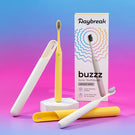Maintaining oral health is essential for overall health, and regular dental cleanings are an important part of that. In-office dental cleaning is a professional procedure performed by a dentist that helps remove plaque and tartar buildup, prevents cavities and gum disease, and detects any potential dental problems. In this blog post, we’ll cover the basics of in-office dental cleaning, frequently asked questions and what to expect during the procedure.
1. What is in-office dental cleaning?
In-office dental cleaning is a professional dental procedure that is performed in a dentist’s office. During the procedure, a dental hygienist or a dentist uses special instruments to remove plaque, tartar, and stains from the surface and in-between the teeth. The cleaning process also includes a tooth polishing and a fluoride treatment to strengthen the tooth enamel and prevent cavities.
2. Why is in-office dental cleaning important?
Regular in-office dental cleaning is important for maintaining proper oral health. Even with proper brushing and flossing at home, plaque and tartar can accumulate in hard-to-reach areas of the mouth, which can lead to cavities and gum disease. In-office dental cleaning helps prevent these issues by removing the buildup of plaque and tartar on the teeth and gums, while also detecting any potential dental problems early on. In addition to preventing dental problems, regular dental cleanings can also help improve overall health. Studies have shown that there is a link between oral health and other health issues such as heart disease, stroke, and diabetes.
3. How often should I get dental cleanings?
The frequency of dental cleanings can vary based on an individual’s oral health needs, but most dentists recommend getting a professional cleaning every six months. However, if you have any dental issues or risk factors for gum disease, such as smoking or a family history of the condition, you may need to have dental cleanings more often.
4.What should I expect during the dental cleaning procedure?
During the dental cleaning procedure, the dental professional (likely your dentist) will examine your mouth and teeth for any signs of dental problems, such as cavities or gum disease. They will then use special instruments to remove any plaque, tartar, or stains from your teeth and gums. The procedure is typically painless and takes about 30 to 60 minutes to complete.
5. What are the different types of dental cleaning?
There are three main types of teeth cleaning:
-
Routine cleaning: This is a form of regular cleaning and dentists usually recommend it every six months. The main aim of routine cleaning is to keep your teeth and gums healthy and plaque-free.
-
Scaling: This form of teeth cleaning is used for patients that have an excess of plaque buildup and are at risk of developing gum disease.
-
Gross debridement: This procedure is typically performed when there is a significant buildup of plaque or tartar that cannot be removed during a standard dental cleaning. Debridement is often recommended for patients who have not had a professional cleaning in a long period of time or for those who neglect proper oral hygiene, resulting in excessive buildup on the surface of teeth and gums. During the procedure, the dentist or hygienist will use special instruments to remove the buildup of tartar and plaque from the teeth and gums. The procedure can be uncomfortable but is generally painless. After debridement, patients may experience some soreness or sensitivity, which typically subsides within a few days.
6. What are some tips for maintaining oral health between cleanings?
In addition to regular dental cleanings, maintaining good oral hygiene practices at home can help prevent dental problems. Here are some tips for maintaining oral health between cleanings:
- Brush your teeth twice a day with a fluoride of hydroxyapatite (HAp) toothpaste.
- Floss daily to remove any food particles and plaque buildup in between your teeth.
- Use mouthwash to kill bacteria and freshen your breath.
- Eat a balanced diet, high in calcium, to help strengthen your teeth.
- Limit sugary and acidic foods and drinks, which can lead to tooth decay.
- Quit smoking or using tobacco products, which can increase your risk of gum disease, oral cancer, and other health problems
Conclusion: In-office dental cleaning is an important part of maintaining proper oral health. Regular cleanings can help prevent dental problems, improve overall health and maintain a bright smile. If you have questions about dental cleaning or need to schedule an appointment for an in-office dental cleaning, contact your dentist today!
Reference: National Library of Medicine







